
Baseball fans fill the stands at Cashman Field during the opening game for the Las Vegas 51s against the Colorado Springs Sky Sox on Friday, April 12, 2013.
Monday, May 20, 2013 | 2 a.m.
Related Coverage
- After 51s deal finalized, it’s business as usual at Cashman Field; but what’s next?
- New Las Vegas 51s owners plan to build ‘finest Triple-A facility in the country'
- Group buys 51s with plans on moving team to Summerlin
- Ray Brewer: Hoping Cashman Field’s days are numbered for greener pastures of Summerlin
- The Sun's Las Vegas 51s section
Building the "finest Triple-A facility in the country" might be easier said than done for the new ownership of the Las Vegas 51s minor league baseball franchise. Some of those others stadiums are pretty impressive — even the cookie-cutter ones of similar design.
Last week, Summerlin Las Vegas Baseball Club LLC, a joint venture of Howard Hughes Corp. and Play Ball Owners Group — including investors Steve Mack, Bart Wear and Chris Kaempfer — purchased the team with intentions of moving it to a new stadium in Summerlin.
They have plans for a $60 million stadium near the Red Rock Resort at Charleston Boulevard and the 215 Beltway that would include the fan and player amenities outdated Cashman Field lacks. Cashman Field, which cost $26 million to build, opened in 1983 when Triple-A baseball came to Las Vegas.
The new stadium would be the centerpiece of a mini-village that includes 140 stores and 17 restaurants, Mack said last week. It would have a capacity of 8,000 to 9,000, including an area for children and families, and feature all of the bells and whistles of a modern facility — including areas for corporate outings, club suites and restaurants. Anything is better than the current setup at Cashman Field, which provides little extra in the fan experience, especially for families.
The goal is to go from the 27th-oldest of 30 Triple-A facilities to one of the finest, said Don Logan, the 51s’ executive vice president.
However, surpassing the extras of some stadiums in other PCL cities could be a stiff challenge.
Chukchansi Park, home of the Fresno Grizzlies, cost $46 million and was designed by Populous, the firm behind San Diego Padres’ Petco Park and the San Francisco Giants’ AT&T Park. AutoZone Park in Memphis has a 60-by-60-foot high-definition screen that is visible from multiple parts of downtown, and two open-air party decks. Zephyr Field in New Orleans has a swimming pool and two hot tubs.
Only Herschel Greer Stadium (1978) in Nashville and Cheney Stadium (1960) in Tacoma, Wash., are older than Cashman Field, but Cheney Stadium went through a $30 million renovation in 2009.
Here’s a look at the PCL’s other 15 stadiums:
-
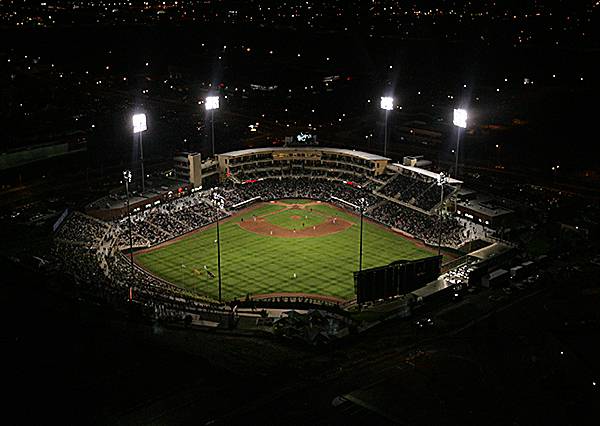
Albuquerque Isotopes — Isotopes Park (built for $25 million in 2003)
The Albuquerque Dukes played from 1969-2000 at the Albuquerque Sports Stadium, which was the second-oldest stadium in the Pacific Coast League and in poor condition in 2000 when the Dukes were sold to a group in Portland, Ore., and moved there. A few years later, voters decided to rebuild the stadium for $25 million. In 2003, Isotopes Park opened; the Triple-A franchise that had moved from Calgary to Albuquerque was renamed the Isotopes. The Los Angeles Dodgers, who for years were affiliated with Albuquerque when the Dukes played there, left Las Vegas after the 2008 season to return to Albuquerque. The Dodgers wouldn’t have left Las Vegas if Cashman Field didn’t lack player amenities. Now, the Isotopes play at the 13,279-seat Isotopes Park, where 11,124 seats have backs and cup holders. The University of New Mexico baseball team also plays at Isotopes Park.
-
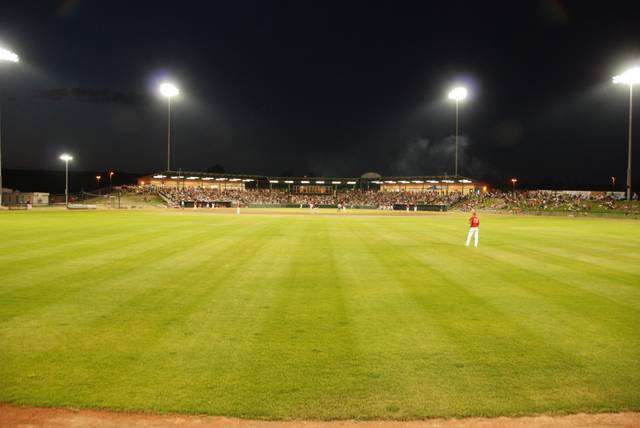
Colorado Springs Sky Sox — Security Service Field (built for $3.7 million in 1988)
The 8,500-seat Security Service Field was renovated at the end of the 2004 season, upgrading the facility after 17 years of operation. Changes included fixing a nonfunctioning scoreboard, adding a banquet facility and creating a walkway to lead fans to the entrance. Located in downtown Colorado Springs, Colo., the stadium was previously called Memorial Park. With the changes in 2004, naming rights for the stadium were sold to Security Service Federal Credit Union.
-
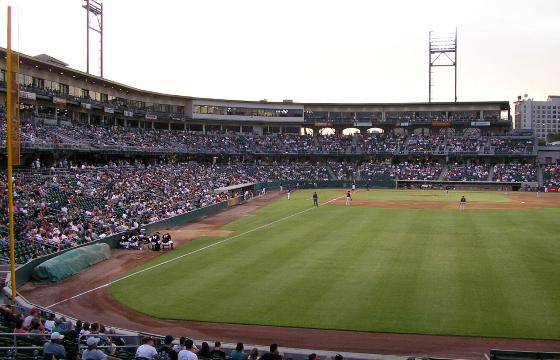
Fresno Grizzlies — Chukchansi Park (built for $46 million in 2002)
One of the Pacific Coast League’s most luxurious stadiums, Chukchansi Park includes 600 club seats and 32 luxury suites. Chukchansi Gold Resort & Casino bought the naming rights in 2006 for roughly $1 million annually for 15 years.
-
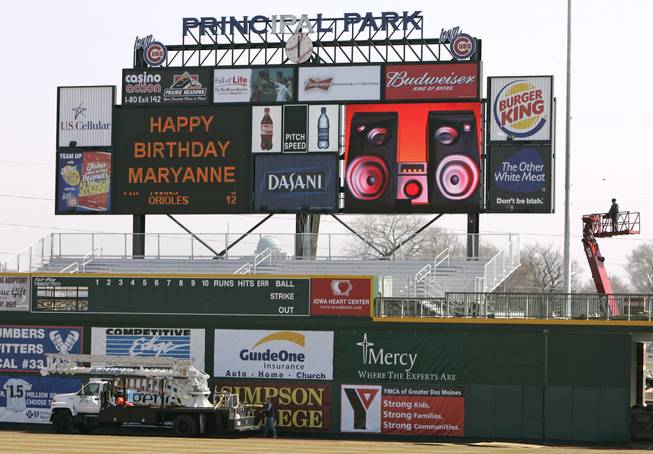
Iowa Cubs — Principal Park (built for $12 million in 1992)
In 2006, Principal Financial group covered part of the stadium’s renovation cost as part of its agreement to purchase the facility’s naming rights. Upgrades included a new scoreboard with a video screen, 1,000 new seats in the right field grandstand and replacing the stadium lighting.
-
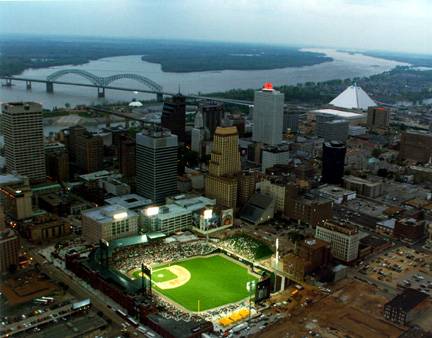
Memphis Redbirds — AutoZone Park (built for $80.5 million in 2000)
The Pacific Coast League’s most expensive stadium, AutoZone Park in downtown Memphis has a seating capacity of 14,384 and the largest video board in all of minor league baseball. The 60-by-60-foot board is 127 feet above the playing field and is visible from many areas of downtown. It has 48 suites, 1,500 club seats and two open-air party decks. There also is a playground for children, multiple restaurants on the concourse and a picnic area that seats up to 500. The University of Memphis also plays there.
-

Nashville Sounds — Herschel Greer Stadium (built for $1.1 million in 1978)
Herschel Greer Stadium in Nashville has similar problems as the Las Vegas 51s’ Cashman Field — both are outdated and lack player and fan amenities that are common in most stadiums. And, just like in Las Vegas, Nashville's ownership is desperately trying to coordinate with the city to build a new stadium. Herschel Greer Stadium is the second-oldest stadium in the league and does have one feature of note — a guitar-shaped scoreboard.
-
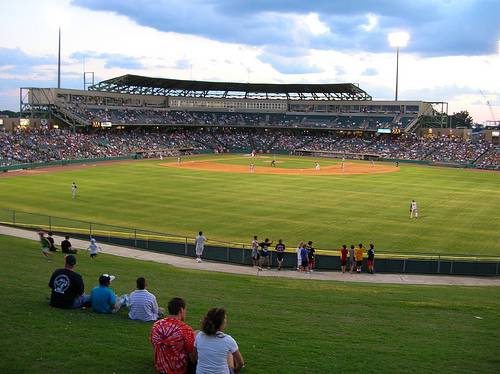
New Orleans Zephyrs — Zephyr Field (built for $26 million in 1997)
Zephyr Field, in Metairie, La., a New Orleans suburb, appears to be a great place to host a party. There’s a swimming pool, two hot tubs and a party shack sponsored by a beer company. And, at the concession stand, they sell some of the city’s popular dishes: jambalaya, po’ boy sandwiches and catfish. In 2006, Louisiana approved $2.1 million to repair damage caused by Hurricane Katrina.
-
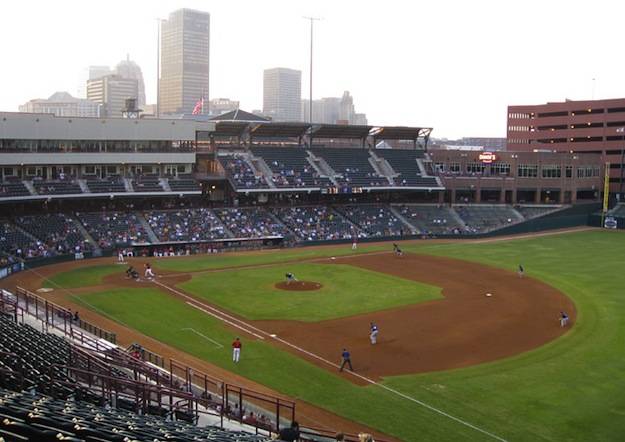
Oklahoma City RedHawks — Chickasaw Bricktown Ballpark (built for $39.9 million in 1998)
The 13,066-seat Chickasaw Bricktown Ballpark is in Oklahoma City’s Bricktown District and annually hosts the Big 12 Conference tournament. It previously hosted the Triple-A Baseball National Championship game. The team in the late 1990s moved from All Sports Stadium to the new ballpark, which is the centerpiece of Oklahoma City’s downtown development.
-
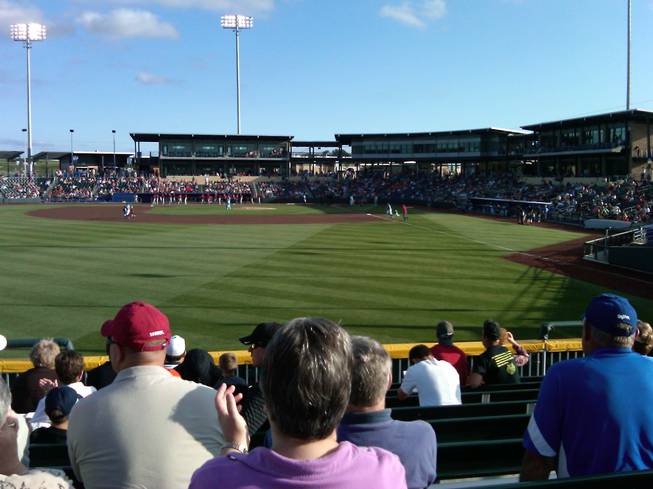
Omaha Storm Chasers — Werner Park (built for $36 million in 2011)
The newest stadium in Triple-A baseball, Werner Park is one of two new stadiums in Omaha, Neb., to open in 2011. TD Ameritrade Park Omaha, a $128 million, 24,000-seat stadium downtown, replaced Rosenblatt Stadium as the host site for the College World Series. The Triple-A Omaha Royals also previously played at Rosenblatt. But when the Royals shared Rosenblatt with the World Series, they had near three-week road trips each June while the event was contested. In the new Werner Park, the capacity is 9,024 and there are 15 private suites. There also is seating in the outfield grass.
-
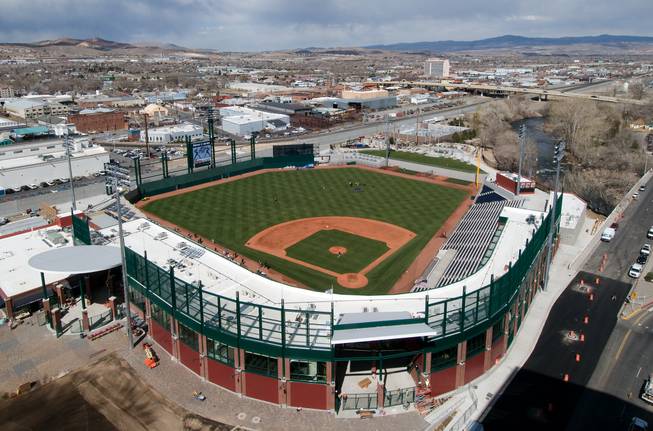
Reno Aces — Aces Ballpark (built for $50 million in 2009)
Aces Ballpark in the east part of downtown Reno is the centerpiece of the Northern Nevada city’s redevelopment. The stadium has a capacity of 9,100. There are two picnic areas, 15-person capacity suites on each side of home plate and 22 luxury boxes.
-

Round Rock Express — Dell Diamond (built for $25 million in 2000)
The stadium has plenty of extras — 30 private suites, a basketball court, a swimming pool and a hot tub. The city of Round Rock contributed about $7 million to the construction of the 8,722-capacity stadium. An additional 3,000 fans can sit in the outfield grass area. Dell purchased the naming rights for $2.5 million over 15 years.
-
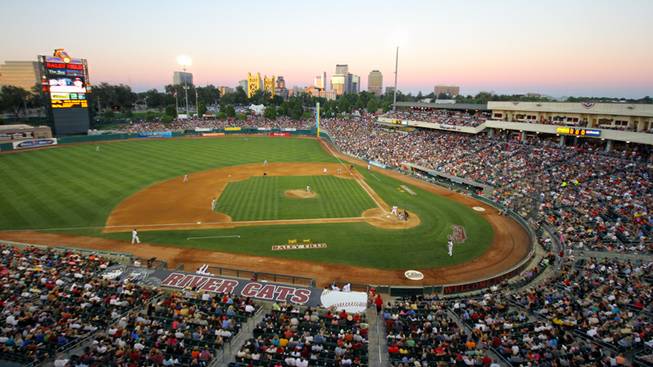
Sacramento River Cats — Raley Field (built for $46.5 million in 2000)
Sacramento always is near the top in attendance in the Pacific Coast League at Raley Field, which has a capacity of 14,014 — 11,093 permanent seats and grass seating in the outfield. It has 2,798 club seats and 36 suites. There also is a club area behind home plate and a party deck.
-
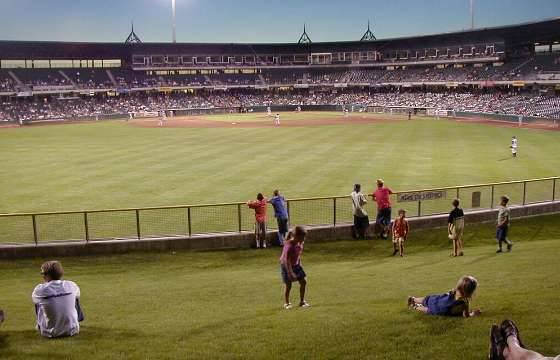
Salt Lake Bees — Spring Mobile Ballpark (built for $24 million in 1994)
With a capacity of 15,411, Spring Mobile Ballpark has the highest seating capacity in the Pacific Coast League. Most fans have a view of the Wasatch Mountains over the left field and center field walls, providing a strong backdrop for a night of minor league baseball. There are 24 luxury suites and two party patios.
-

Tacoma Rainiers — Cheney Stadium (built for $940,000 in 1960)
Although Cheney Stadium is the oldest facility in the Pacific Coast League, it’s been renovated four times since opening in 1960. The latest renovation, in 2009, cost $30 million, bringing 16 luxury suites, a playground, extra bathrooms and concessions, and a new restaurant. The Rainiers have a contract to play in Tacoma through 2041. Wooden grandstand seats from when the stadium opened in 1960 are still in place today.
-
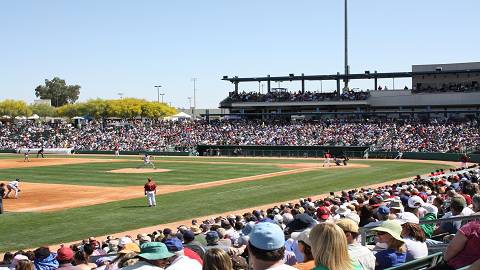
Tuscon Padres — Kino Veterans Memorial Stadium (built for $38 million in 1998)
Cactus League spring training games are frequently played at the stadium, which has a capacity of 11,500 and became home to the San Diego Padres’ Triple-A team in 2011 when it left Portland, Ore. The team is temporarily in Arizona as Padres officials search for a new Triple-A home. One possibility is El Paso, Texas, according to reports.
Ray Brewer can be reached at 990-2662 or [email protected]. Follow Ray on Twitter at twitter.com/raybrewer21.
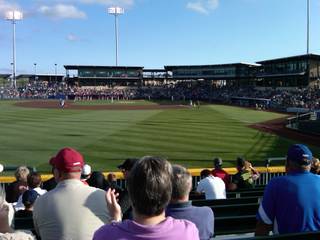
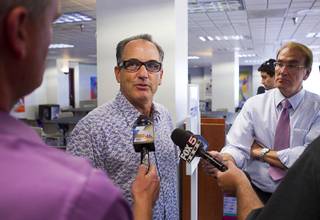
















Join the Discussion:
Check this out for a full explanation of our conversion to the LiveFyre commenting system and instructions on how to sign up for an account.
Full comments policy